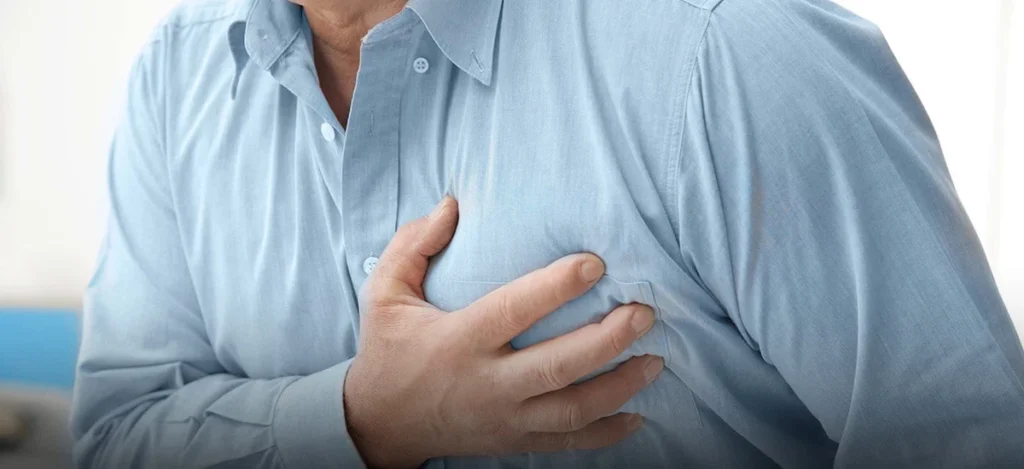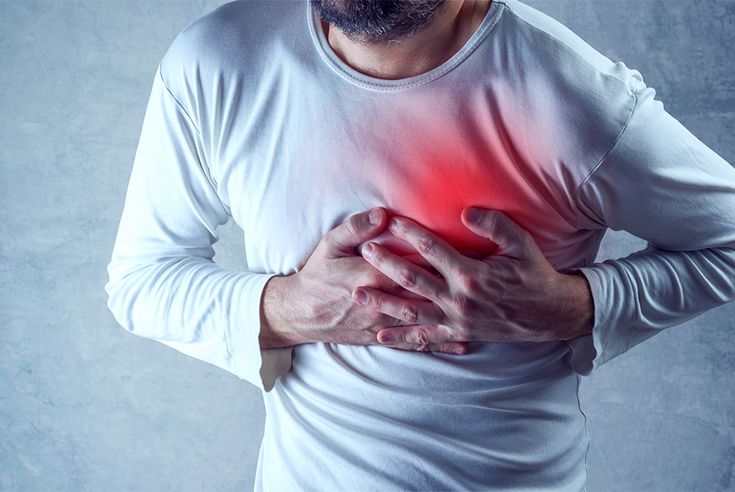Pain in the chest, whether it occurs on the left, the right, or in the middle, can be an indicator of several conditions such as heart disease, lung issues, musculoskeletal issues, and even gastrointestinal problems. Although chest pain may be a sign of a heart attack, which is more likely to be experienced on the left, one should note that other conditions can also result in chest pain, such as right chest pain and mid-chest pain. Furthermore, females and males might get a different kind of pain during a heart attack, with females more likely to feel pain in the whole chest instead of the left side.
Introduction
Understanding Chest Pain
A patient’s chest pain is one of the most alarming complaints they can have. It can be a dull ache to a stabbing, sharp pain and occurs on the left, right, or middle of the chest. Though common with heart illnesses, chest pain can result from numerous causes—ranging from digestive and respiratory to muscular and psychological conditions. Knowing what various forms of chest pain can indicate is important in knowing when it’s something trivial and when it might be a life-threatening medical emergency.
Importance of Identifying Chest Pain
Because the chest houses vital organs like the heart and lungs, any discomfort here has to be taken seriously. Chest pain can be an indication of life-threatening conditions like a pulmonary embolism or heart attack, but it can also result from harmless conditions like acid reflux or pulled muscles. Accurate diagnosis not only aids in immediate treatment but also prevents long-term complications. Early identification and accurate medical evaluation can literally save lives
Anatomy of the Chest
The chest, or thorax, is a region of the body between the neck and abdomen, housing vital organs and structures. It’s defined by the thoracic cavity and the thoracic wall. The thoracic cavity contains the lungs, heart, major blood vessels, esophagus, and trachea. The thoracic wall comprises the ribs, sternum, and associated muscles.

Common Causes of Chest Pain
Chest pain can stem from various causes, including heart-related issues, musculoskeletal problems, and gastrointestinal issues. Some common causes include:
Heart-related:
- Angina: Chest pain due to reduced blood flow to the heart muscle.
- Heart attack: Occurs when blood flow to the heart muscle is blocked.
- Aortic dissection: A tear in the wall of the aorta, causing sudden, severe pain.
- Pericarditis: Inflammation of the sac around the heart.
Musculoskeletal:
- Muscle strain or injury: Pain from straining or injuring chest muscles.
- Costochondritis: Inflammation of the cartilage connecting ribs to the breastbone.
- Rib fractures or bruises: Pain from broken or bruised ribs.
Left-Sided Chest Pain
Left chest pain may be a symptom of a problem with your gastrointestinal tract, muscles, bones, lungs, or heart. Left chest pain due to cardiac problems can be intense or stabbing. It may be like pressure. You may also experience nausea, but that may accompany GI problems that similarly produce chest pain.
- Heart attack. Your heart muscle dies when it can’t get enough oxygen because of a blockage in the coronary artery supplying its blood. This usually presents as pain or pressure over a wide area of your chest.
- heart disease. Cholesterol buildup can narrow and block the blood vessels that carry blood to your heart. It’s typically worse with exercise because you can’t get enough blood to the heart muscle and clogged coronary arteries. You can often relieve this with rest.

Right-Sided Chest Pain
Right side chest pain usually occurs due to a problem in your lungs. Sharp right-side chest pain is possible. It becomes worse when you breathe in. You might experience other signs in addition to right-side chest pain, such as tightness or shortness of breath.
Medications relieve many reasons for right-side chest pain. Others require treatment involving a procedure.
Liver and Gallbladder Issues:
- Gallstones:
These can cause sharp pain in the right upper abdomen that may radiate to the chest, shoulder, or back. - Cholecystitis:
Inflammation of the gallbladder can also lead to similar pain, often associated with nausea or vomiting.
Other Potential Causes:
- Nerve Irritation: Shingles or pinched nerves can cause sharp, burning, or tingling pain in the chest.
- Anxiety and Stress: These can manifest as chest pain, often described as tightness or pressure.
- Broken Ribs: Injuries to the chest can cause pain, especially when breathing or moving.

Middle Chest Pain
Several illnesses can produce middle chest pain, such as cardiac conditions like stable angina and gastrointestinal conditions like acid reflux and peptic ulcers. Knowledge of the subtleties of each etiology is important for proper diagnosis and treatment.
Gastrointestinal Causes:
- Acid Reflux (Gastroesophageal Reflux Disease – GERD):
GERD is a common cause of chest pain, where stomach acid flows back up into the esophagus, causing a burning sensation in the chest. - Peptic Ulcers:
Ulcers in the stomach or upper small intestine can also cause chest pain, often described as a burning or gnawing pain

- Cardiac Causes: Angina, a type of chest pain caused by reduced blood supply to the heart, is stable, meaning that it will always occur when you exert yourself or when you are under great stress.
- Heart Attack (Myocardial Infarction): While a heart attack can cause severe, crushing chest pain, other conditions can also cause chest pain that may be mistaken for a heart attack.
- Other Cardiac Conditions: Conditions like coronary artery disease and heart muscle disorders can also lead to chest pain, but are often associated with exertion or specific symptoms.
When to See a Physiotherapist
A physiotherapist will be able to assist with ongoing pain, decreased mobility, or stiffness, particularly if these are affecting day-to-day activities. They can also benefit you after injury or surgery, for chronic conditions such as arthritis, and for the prevention of future injury. If you are experiencing any of these symptoms, visiting a physiotherapist would be suggested.

Conclusion
There are so many things that could cause chest pain—everything from as minor as straining a muscle to something more serious such as a heart or lung condition. Where the pain is, whether on the left, right, or middle of the chest, may hold vital clues, but it does not always signify what’s happening based on location.
Men and women might also experience chest pain in ways that are sometimes more difficult to identify. That’s why one should never neglect any type of chest pain. If the pain is sudden, severe, or accompanied by such symptoms as shortness of breath, dizziness, or nausea, it’s advisable to seek immediate medical care. Better safe than sorry, after all. Schedule your physiotherapy appointment today to relieve chest pain and improve comfort!
